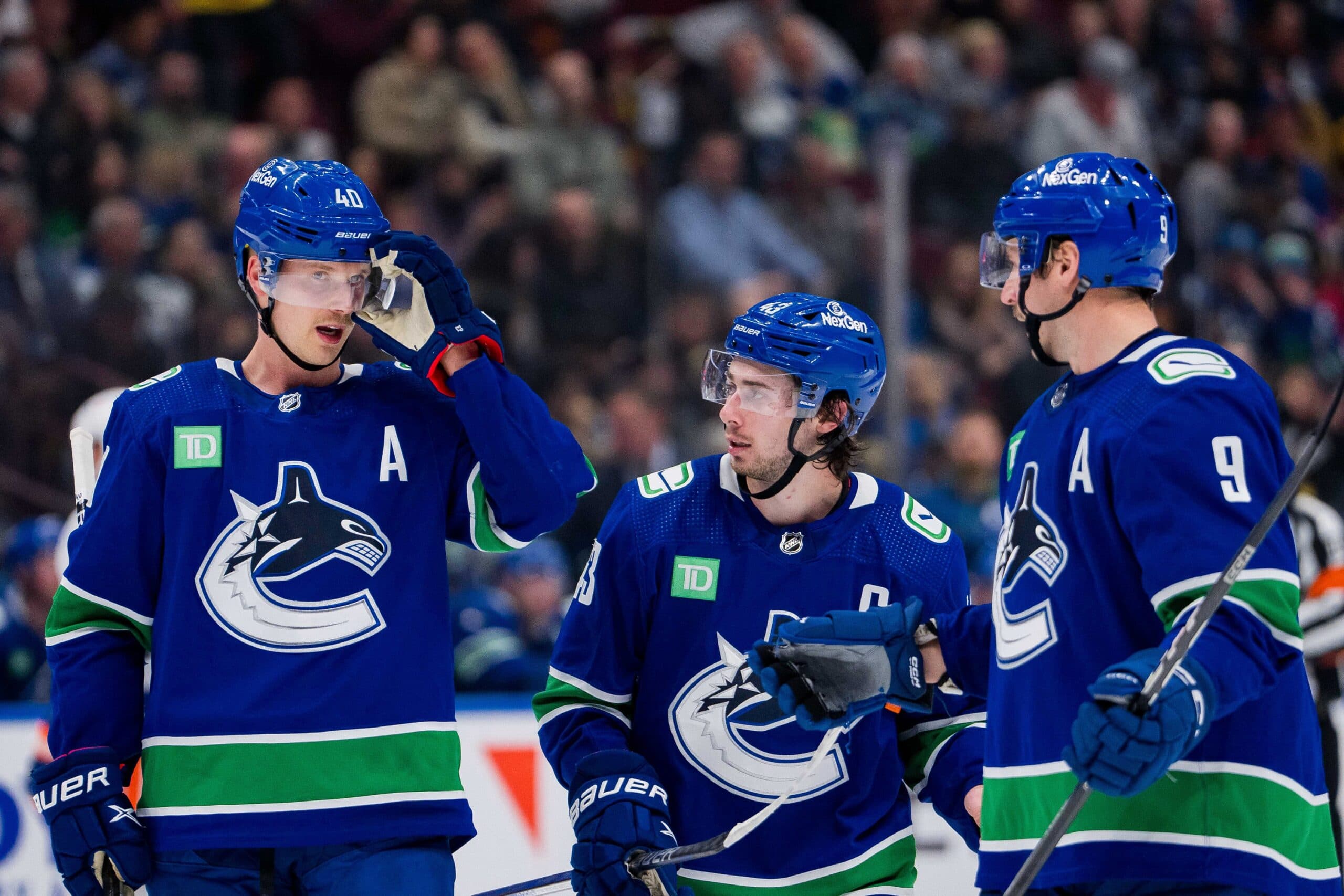Nation Sites
The Nation Network
CanucksArmy has no direct affiliation to the Vancouver Canucks, Canucks Sports & Entertainment, NHL, or NHLPA
Canucks rank 5th in Athletic’s 2024 NHL contract efficiency rankings

Photo credit: © Bob Frid-USA TODAY Sports
By Tyson Cole
Jul 25, 2024, 18:21 EDTUpdated: Jul 25, 2024, 23:20 EDT
The Athletic did their yearly contract efficiency rankings for 2024, and after a very successful offseason from the management group of Patrik Allvin and Jim Rutherford, the Vancouver Canucks jumped substantially in the rankings.
Vancouver jumped from 18th in 2023 to 5th in 2024, the biggest increase from last season across the league. The four teams ahead of them, in order, are the Florida Panthers, Edmonton Oilers, Colorado Avalanche, and Carolina Hurricanes.
In the article, Dom Luszczyszyn goes team by team and breaks down each player’s contract, the remaining years, the annual surplus and the total surplus remaining on the contract based on his model’s value.
Here is how Dom describes the goal of this exercise and his model:
“When it comes to forecasting contracts, how a player ages and how the cap increases are major factors. Each player’s value is projected out into the future and a cap hit percentage is determined based on that. Apply that to the expected salary cap for each future year and you get each player’s expected contract value. That means younger players will look a lot better here, especially if they’re on a contract with a lengthy term. You may not agree with every player’s value on this list, but at least keep in mind where the model estimates are coming from. It’s about the future, not the present.”
“The goal here is to grade contracts empirically with the same context being applied to each player across the league: How much value does each player bring to the table per year and over the life of the contract? The way that’s measured comes from comparing a player’s Net Rating and the expected salary that comes with it to a player’s current contract.”
“What players have already done holds no merit, this is about the future value of the deal. Contract clauses and bonus structure are important, but not considered in this assessment. Players on LTIR were not considered.”
“The total projected value for every contract listed below is $2.55 billion, or $79.5 million per team. The total actual value for every contract listed (including dead money) is $2.47 billion, or $77.2 million per team. Both are roughly in line with the league’s salary midpoint.”
Here is how he broke down Vancouver’s roster.

All but two players contracts on the Canucks have negative surplus value: Tyler Myers and Nils Aman. According to Dom’s model, Tyler Myers is making $1.1 million more than his value, and Nils Äman is making 100k more than his value. With all things considered, for a 24-man NHL roster to only be spending $1.2 million over each player’s value is impressive.
The biggest annual surplus values are Quinn Hughes — shocker — and Nils Höglander. According to Dom’s model, Hughes is valued at $14.7 million with an annual surplus of $6.9 million, and Höglander is valued at $5.3 million with an annual surplus of $4.2 million. After Hughes’ Norris trophy season and Höglander’s 24 even-strength goals, with a lot of them coming in the bottom six, they’re due for some massive raises when their contracts are due.
To further prove the excellent work from Allvin and Rutherford this summer, all six of the newly acquired Canucks players have surplus value: Daniel Sprong ($2 million), Jake DeBrusk ($1.6 million), Danton Heinen ($1.2 million), Vincent Desharnais ($400k), Derek Forbort ($200k), and Kiefer Sherwood ($100k).
Even the extensions the club signed this offseason — which some were scoffed at — provide surplus value to the team: Elias Pettersson ($800k), Vasily Podkolzin ($400k), Teddy Blueger ($100k), with Filip Hronek and Dakota Joshua coming in at perfect model value.
Take a bow, Allvin and Rutherford, as these are all tidy pieces of business.
Breaking News
- Was this the absolute best time for the Canucks to trade Quinn Hughes?
- The Farmies: Jonathan Lekkerimäki walks it off as Abbotsford Canucks defeat Wranglers 3-2 in overtime
- Canucks Game Day: Dawn of a new era in early Sunday start against the Devils
- Bieksa offers thoughts on Hughes’ Canucks legacy and raves about Zeev Buium
- The mystery box from the Hughes trade: What the Canucks have in Liam Öhgren
